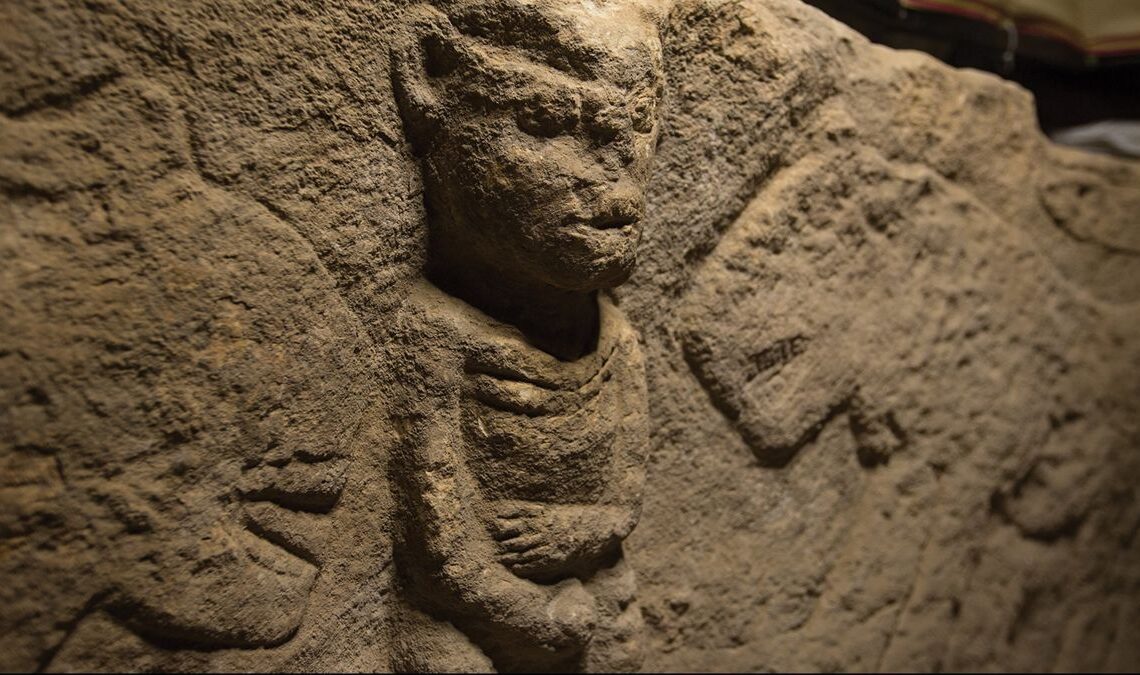An 11,000-year-old rock-cut relief in southeastern Turkey featuring menacing animals and two men, one of whom is holding his genitalia, is the oldest narrative scene on record, a new study suggests.
Archaeologists discovered the curious carvings on built-in benches within a Neolithic (or New Stone Age) building in the Urfa region. Measuring roughly 2.5 to 3 feet (0.7 to 0.9 meter) tall and 12 feet (3.7 m) long, the newly discovered rock-cut relief showcases two leopards, a bull and the two men — one grasping his phallus and the other holding a rattle or snake.
Whoever carved the wild creatures accentuated their dangerous, pointy parts — the leopards’ teeth and the bulls’ horns. But exactly what this narrative was meant to convey is lost to time, according to the study, which was published Thursday (Dec. 8) in the journal Antiquity (opens in new tab).
Related: Human head carvings and phallus-shaped pillars discovered at 11,000-year-old site in Turkey
Archaeologists found the carved scene at Sayburç, a Neolithic mound site roughly 35 miles (56 kilometers) east of the Euphrates River and 20 miles (32 km) north of the Syrian border. Sayburç dates to the ninth millennium B.C., a time when hunter-gatherers were shifting to farming and long-term settlements.
Excavation at the site began in 2021 and quickly revealed the ruins of a communal building measuring 36 feet (11 m) in diameter, or about the length of a telephone pole. The building was carved into the limestone bedrock with stone-built walls and benches that rose from the floor. The artwork was found on the front of one of the carved benches, according to Eylem Özdoğan (opens in new tab), an archaeologist at Istanbul University and the study’s sole author.
According to Özdoğan’s research, there are two separate scenes that are meant to be read together as a narrative work of art. Starting from the left are shallow carvings of a bull and a man facing each other. The man has a “phallus-shaped extension on the abdomen,” and his “raised, open left hand has six fingers, while the right holds a snake or rattle,” she wrote in the paper. The second scene involves two leopards — mouths open, teeth visible, long tails curled up toward the body — facing a man who is carved almost in 3D. He stares into the room rather than to the side and holds his phallus with his…
Click Here to Read the Full Original Article at Livescience…

